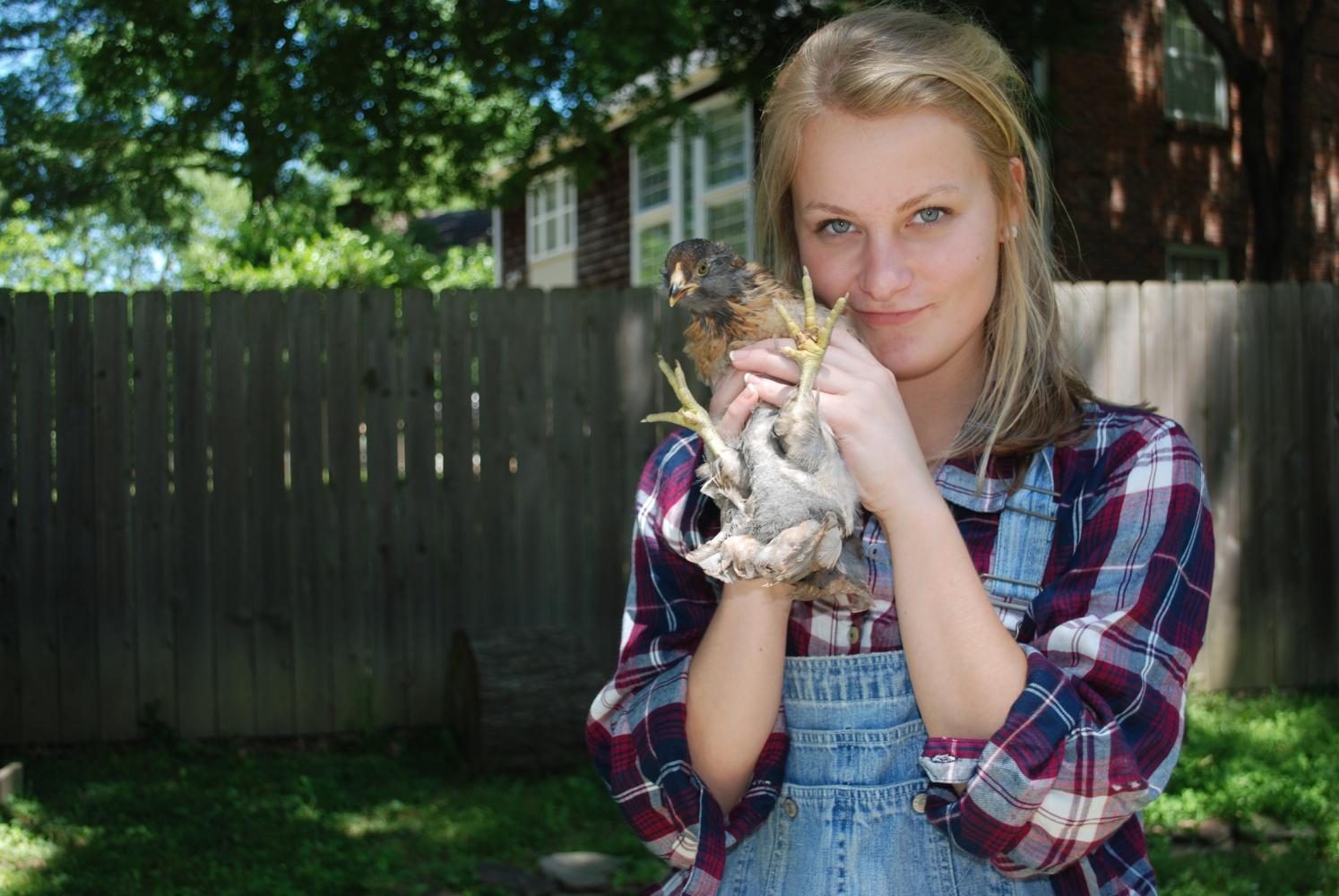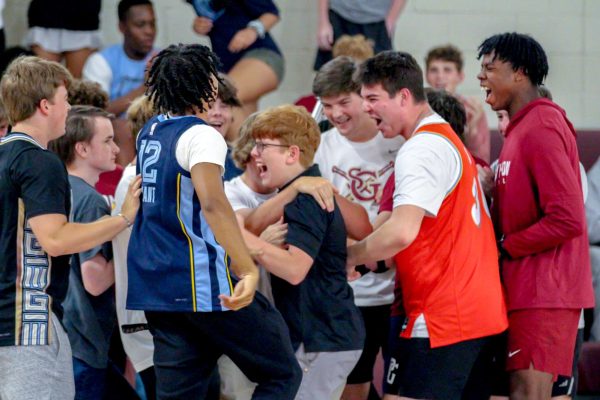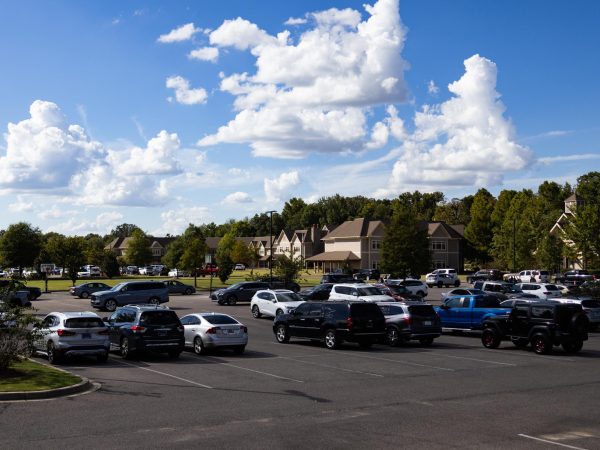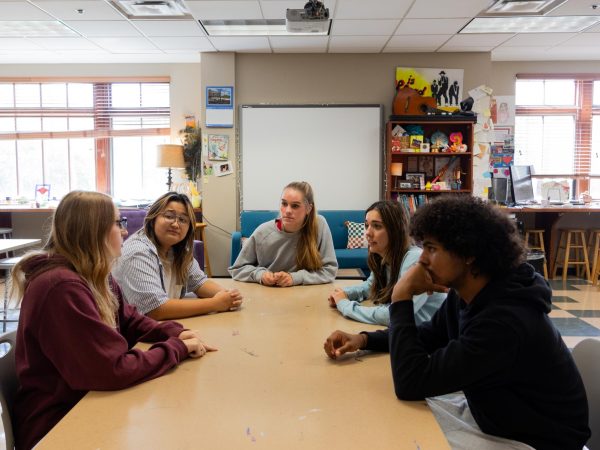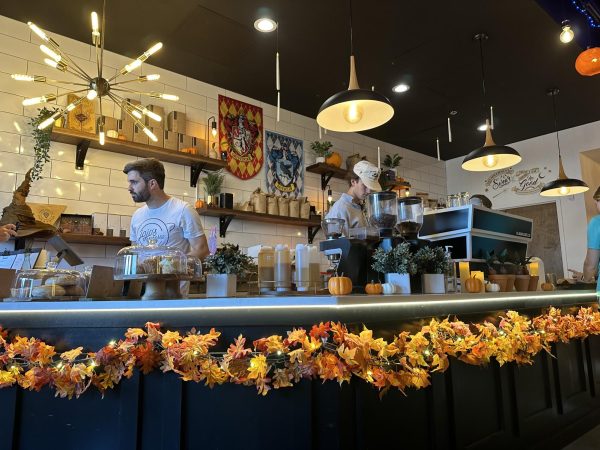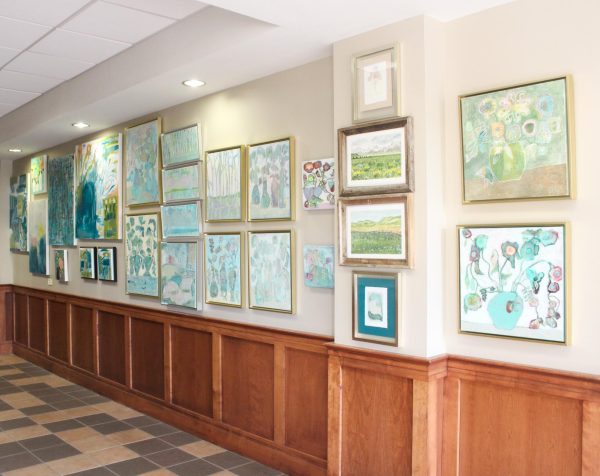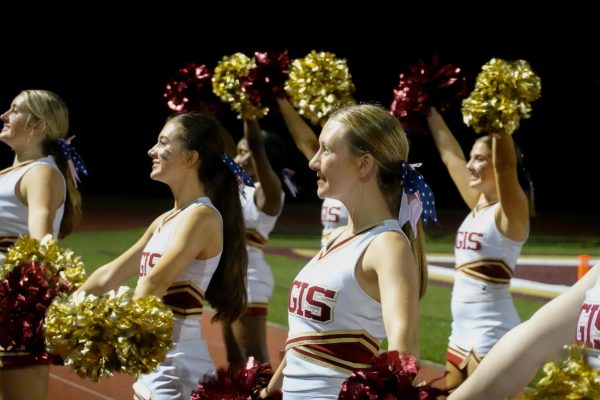Growing pains
Agricultural projects on campus provide a real-world education for nature lovers
In the beginning seniors, now alumni, Harrison Schutt and John Kutteh built a hoop house, and it was good. The sun shone. The birds sang. Seeds were planted. That was good, too. Well, except for one thing.
“William McBride did accidentally smash my phone with a sledge hammer,” Schutt said, “which I guess was the worst part, even though it was pretty funny.”
But, it was not good for Schutt and Kutteh to be alone.
In the year that followed seniors Anna Besh, Shane Horton and Channell Cole joined them. Besh continued the farm while Horton built a chicken coop, and Cole kept bees. Benjamin Stamps was in charge the budget, the money they spent and the money they hoped to bring in. St. George’s saw and thought it was good.
Little did they know, winter was coming. It would be accompanied by a crash course in the realities of modern agriculture.
In the beginning: Spring 2016
The original hoop house designed, built, and planted by Schutt and Kutteh in 2015. Undertaking this was a large challenge as neither Schutt or Kutteh had prior construction experience.This served as the culmination of their Senior Independent Study, commonly called SIS. The senior independent study at St. George’s offers seniors an opportunity to demonstrate their skills while pursuing something of interest to them.
Though SIS projects typically last only one year, Schutt wished to leave a more lasting legacy by connecting people to nature through the hoop house.
“As long as people are getting out to that beautiful island and veggies are being grown to be eaten, I’ll be happy,” Schutt said.
Wishing to continue and enhance the suburban farm in their senior year, Horton and Cole decided to raise chickens and bees to increase the connection of the school to the outdoors.
“My dad has been taking care of chickens for a really long time, about six years. He inspired me.” Horton said. “After John and Harrison started the farm, I thought it would be really cool if I could also do something with that, so I brought chickens.”
The chickens, all of whom were given the last name of Peters in honor of Head of School Ross Peters, also love the connection with the suburban farms. Sometimes a tunnel connects the hoop house to the coop and the chickens get to explore the farm and eat bugs.
Looking forward to healthy chickens, robust crops, and busy bees, the students were excited as summer approached.
In the Garden: Summer 2016
Mr. Jamie Roszel, who oversees the SIS program at St. George’s, strongly supported this new project and viewed it the embodiment of the SIS as well as the continuation of Suburban Farms heading into the next school year under Anna Besh’s leadership.
“ [The Birds and the Bees is] actual experience. It’s not theatrical. It’s not hypothetical, and you are actually spending money, working to make money,” Mr. Roszel said. “It really is like an actual small business. If your interest at all is in local, organic, sustainable, contributing to the community, then this does all of those things, while actually teaching you real-world skills, which is really nice.”
With the death of a chicken, the students had to quickly learn to emotionally distance themselves from the livestock.
“We had one die over the summer from dehydration,” Cole said, “But, that’s also natural selection. If she chose not to drink water, then it’s her fault.”
Calm before the Storm: Fall 2016
During the fall, the agricultural projects began to find their rhythm: the chickens were producing eggs, the bees were healthy and produce was being grown like strawberries, onions, and corn.
Meanwhile the Suburban Farms crew were learning about the care of chickens and bees, construction, farming, and money management.
“It’s just really cool to see how important each part of the ecosystem is,” Cole said. “They are these tiny little bees, and they have such a big impact on the word.”
Horton, Besh and Cole were able to enjoy and share their accomplishments with the first fall festival in December. Eating food grown by St. George’s students and listening to music by St. George’s students made for an excellent evening.
Senior Graham Sisson is a frequent volunteer for the Suburban Farms and attended the fall fest along with roughly thirty others.
“It was an awesome opportunity to get a good group of students out there and experience all the resources we have,” Sisson said. “It was a really peaceful time, we had an awesome meal that some of the girls at the suburban farms cooked up for us.”
Rough Waters: Winter 2016 and 2017
As the cold settled in, struggles began to build. Deer broke into the hoop house and ate the produce while the chickens slowed, then halted, producing eggs for the winter.
With no produce or eggs to sell, the students came face-to-face with the economic realities of owning a small business and stress began to build, especially for CFO Benjamin Stamps.
“Money can make people stressed out. How much we put in versus how much we got back is kind of hard for all of us right now,” Stamps said January 9. “But, it’s definitely an investment and a foundation for future St. George’s students.”
Then, just two days later a tragedy struck.
“The bees, yesterday, died,” Cole said during an interview on January 12. ” All of them.” And with them, any hope of producing honey.
Although bees often die in the winter, it was not clear why the St. George’s beehive did.
On Instagram, two posts announced the loss of the bees, and, with a total of 235 likes and 20 comments, the St. George’s community mourned with Cole. The loss of the bees caused Cole to have to reconsider the direction of her part of the project.
Cole said the best case scenario was someone deciding to continue the bees for their SIS and buy a new colony, while worst case scenario was that the supplies be given away and the St. George’s bee community come to an end.
Mr. Roszel was not surprised by the challenges faced by the project in its first year
“My view on this project hasn’t changed. I thought it would be really hard, and it turns out it’s really hard.” Mr. Roszel said, “The SIS is for someone to take healthy risks. It is a sandbox that we can let you play in, essentially without the consequences of the real world.”
Let there be light: Spring 2017
Over the past few months, there are signs of new life. The projects recovered as chickens began to produce eggs again and more crops were planted.
When discussing why she hopes someone will continue a beehive at St. George’s for next year, Cole reflected on how much she enjoyed it.
“It’s so cool being a beekeeper. It is fun and you learn about the bees and how important they are to the environment.” Cole said. “The fact is that they are going extinct. It would be really awesome to have a consistent bee colony at school.”
Besh, Cole and Horton are now looking for upcoming leadership for their agricultural projects for the years to come. Looking back, the girls created many lasting memories in the outdoors.
“The best moment was when we sold eggs in the fall or spring.” Horton said. “Actually, it was when we got our first egg! Then we started to get a ton after that.”
This unique experience also helped them in unexpected ways.
“You have awesome college essays. I swear it’s what got me into college,” Cole said, “All of essays were like, ‘Yes, I’m a beekeeper, a cheerleader, a senior in high school. I can be anything I want to be.’”


